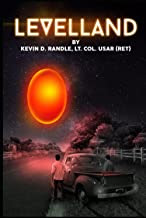There is, in UFO history, a number of reports of aircraft disappearing into the mists of
 time. In 1947 the Stardust, a passenger plane on its way to Santiago, Chile disappeared allegedly in sight of the airfield. The search, conducted over the next week found no sign of the wreckage.
time. In 1947 the Stardust, a passenger plane on its way to Santiago, Chile disappeared allegedly in sight of the airfield. The search, conducted over the next week found no sign of the wreckage.In November 1953, an Air Force interceptor, sent to identify an object over Lake Superior disappeared from radar after its image was seen to merge with that of an intruder. The search, conducted over the next week found no sign of the wreckage.
In the mid-1950s, according to a retired Air Force brigadier general, four aircraft on a mission over Kentucky disappeared. According to the general, no sign of wreckage was ever found.
The first of these strange disappearances occurred on August 2, 1947, the Stardust, with eleven people on board took from Buenos Aires for Santiago. It was a routine flight for the British South American Airways plane. The weather was deteriorating and later would approach blizzard conditions, but it wasn’t so bad that the captain, Reginald Cook thought he needed to cancel the flight.
At 5:33 p.m. the radio operator Dennis Harmer sent a message to the Santiago Tower that they were slightly behind schedule but they believed they would arrive at the airfield in about twelve minutes. Then, at 5:41, Harmer made the last transmission. It said, "ETA Santiago, 17:45 hours. Stendec."
In the Santiago Tower, the operator didn’t understand the last word and asked that it be repeated. It was. Twice. Stendec. No one knew what that meant. It was also the last word ever heard from the aircraft. It had simply vanished from the face of the Earth.
Because of a snow storm, the search for the aircraft couldn’t begin until August 3. At first, given the position provided by the aircraft, the search centered near Santiago. When nothing was found there, the search was expanded but no trace of the aircraft was found. At least none was found in 1953.
Nearly forty-seven years later, in January, 2000, five mountaineers, climbing the rugged Mount Tupungato in Argentina, discovered the wreckage of an old aircraft. They also found the remains of three people. The Argentine Army sent an expedition into the area, which is so rugged that the soldiers had to hike the last few miles because even the burros were unable to make it. Using serial numbers from the engines and other bits of wreckage, they identified the aircraft as the long missing Stardust.
The aircraft, not fifty miles from Santiago as the pilots had believed and still over the Andes, was caught in the snow. The pilot, thinking he was approaching Santiago, but with no visual evidence outside the cockpit, began to descend. Unfortunately, their navigation was off and rather than being over the relatively flat ground near the Santiago airport, were still in the mountains. Tragically, they flew into the side of a mountain glacier. The show covered the wreckage during the night, concealing it from the aerial search along the flight route. Then, slowly the glacier swallowed all remnants of the aircraft. For fifty years that wreckage "flowed" downhill with the glacier. It finally flowed to the surface a couple of miles down the mountain. It was here, on a plateau, the wreckage was exposed and discovered.
The army expedition uncovered more wreckage, retrieved the remains of most of the victims some of whom were identified using DNA techniques, and confirmed the identity of the aircraft. The mystery of the Stardust had been solved... Well, most of it. No one has ever figured out what the strange word sent by Harmer meant. It is the only mystery about the crash that remains.





















No comments:
Post a Comment